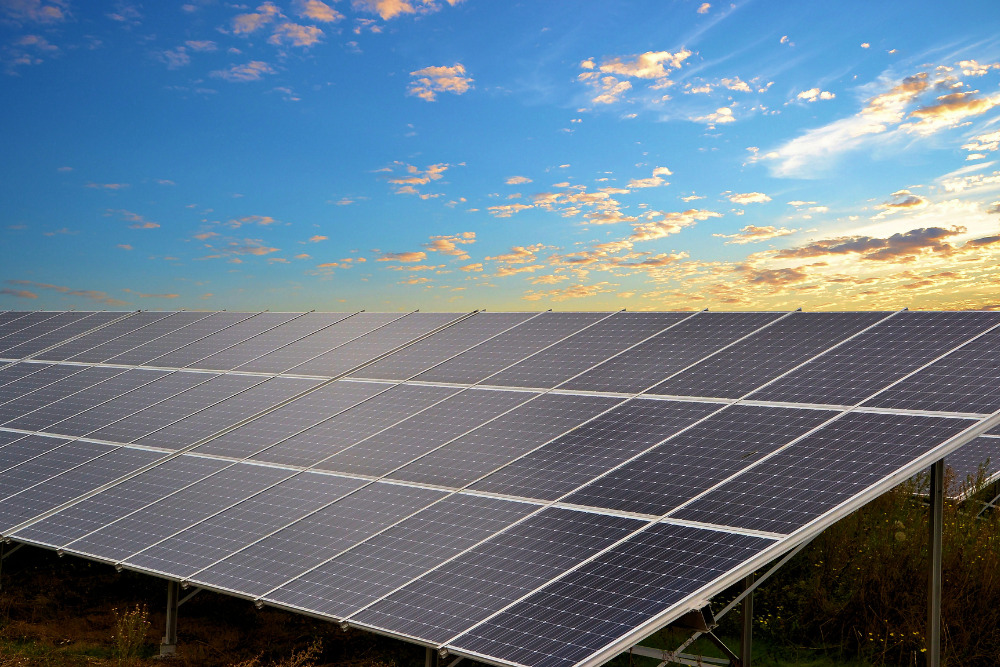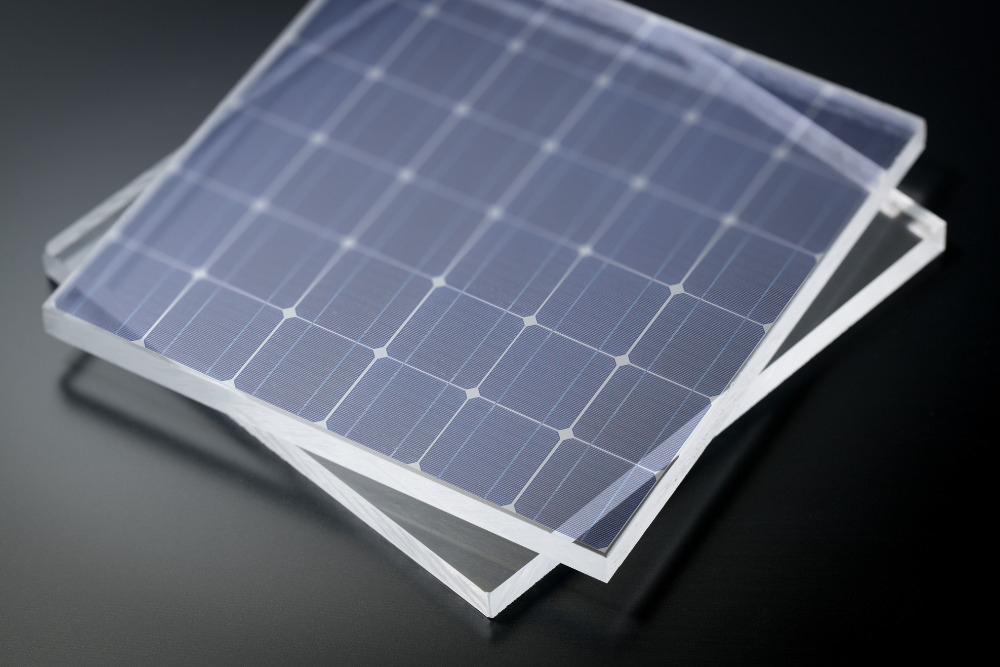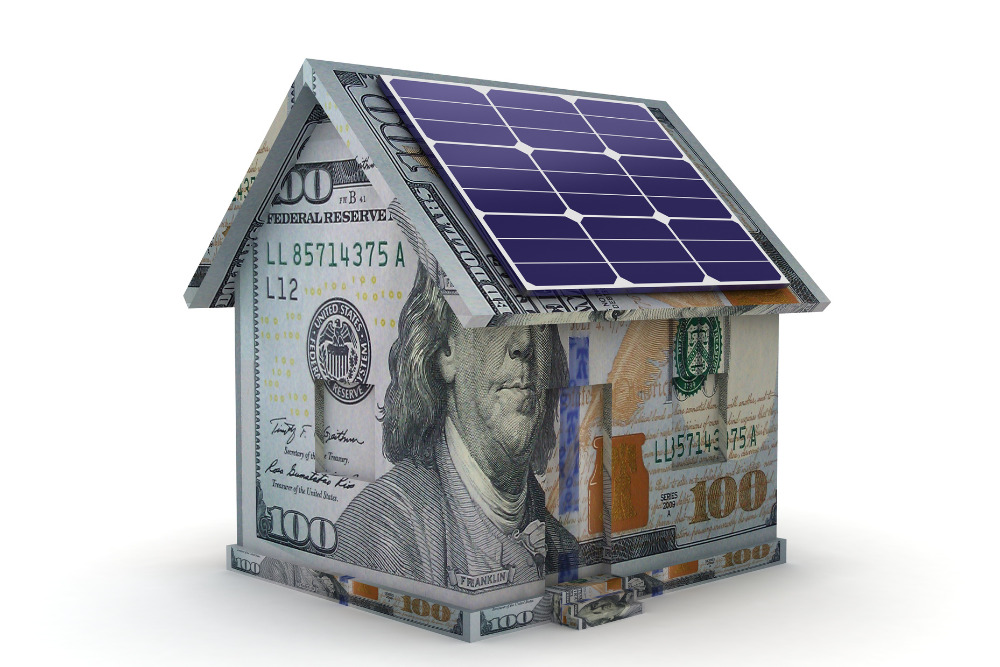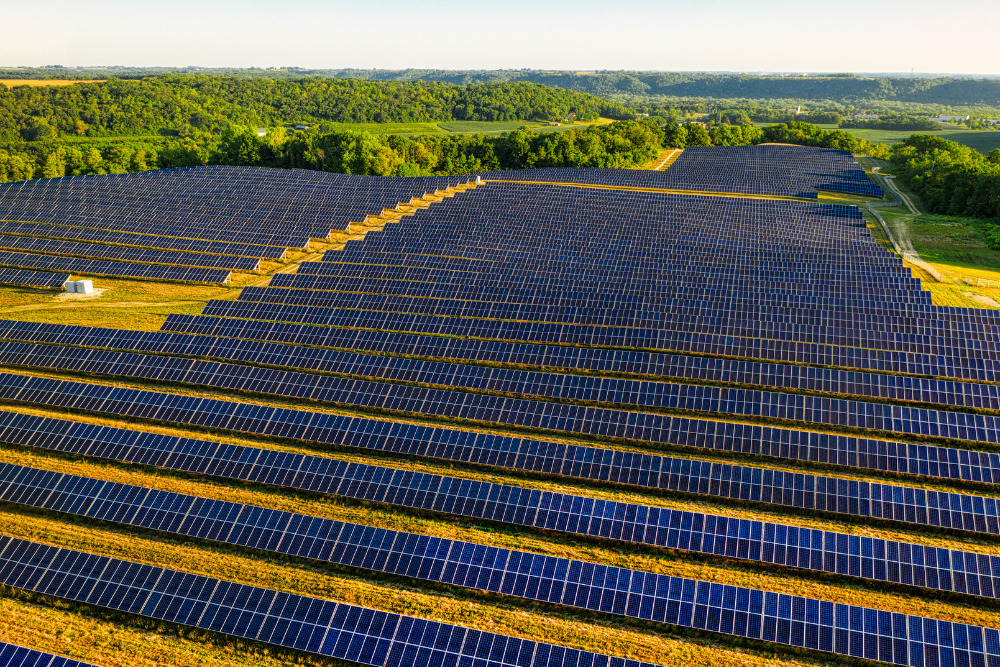
Discover the latest trends and developments in the solar energy industry, exploring the competitive landscape, market size projections, technological innovations, and regional influences, such as the Middle East, South Africa, and the United States.
The increasing demand for green energy means the solar energy industry is in a constant state of evolution. With advancements in solar technology happening all the time, the solar energy market for solar photovoltaic (PV) systems is expected to grow substantially in the next coming years.
From rooftop solar installations to utility-scale power plants and solar module advancements, we look at the exciting developments shaping the future of solar energy.
#1 Advancing Technology
PV systems have come a long way since the first solar systems became widely available in the 1980s. While monocrystalline and polycrystalline panels still lead the way in efficiency and power generation, new solar technology is emerging all the time.
Perovskite solar cells are a new kind of solar cell. They’re cheap to manufacture and able to be manufactured in various shapes and sizes.
On the downside, they are less efficient than traditional solar cells. These cells have achieved up to 25% power conversion efficiencies in the lab but are still only about 15% efficient in commercial products.
However, perovskite solar cells are expected to become more efficient and cost-effective in the coming years.
Organic solar cells are another new type of solar cell made from organic materials. Organic solar cells are also very cheap to produce and can be flexible. However, like perovskite cells, they are less efficient than traditional solar cells.
Organic cells have achieved up to 17% power conversion efficiencies in the lab, but are still only about 10% efficient in commercial products. These cells are also less stable than traditional solar cells and can degrade over time due to the organic materials (usually carbon) used to make them.
Quantum dot solar cells are a new type of solar energy technology that uses quantum dots to convert sunlight into electricity. Quantum dot solar cells are efficient and can be made in various colors. However, they are still in the early stages of development and are not yet commercially available.
Quantum dot cells have achieved up to 22% power conversion efficiencies in the lab, but are still only about 15% efficient in commercial products. They are also more expensive than traditional solar cells.
Transparent solar cells are a new type of solar cell that turn windows into a source of sustainable energy without compromising the view. These cells are still in the early stages of development but have the potential to revolutionize the way we use solar energy.
They have achieved up to 10% power conversion efficiencies, but are still very expensive and less efficient than traditional solar cells.

Concentrated solar power (CSP) uses mirrors or lenses to concentrate sunlight and heat a fluid. The heat can then generate electricity for heat or water desalination. CSP is less common than PV solar power, but it is a promising technology for generating solar energy on a large scale.
#2 More Efficient And Sustainable Lifecycle
By analyzing the lifecycle of solar panels, we have the technology to make solar cell manufacturing, transportation, and recycling more efficient and sustainable.
There are several ways that can make solar cell manufacturing more efficient, using less energy and water, and fewer chemicals.
For example, some manufacturers use less energy-intensive methods to produce polysilicon, the main material in solar cells.
Using renewable energy, like solar and wind, during solar panel manufacturing helps manufacturers reduce their reliance on fossil fuels and lowers the overall carbon footprint of solar panels.
Solar cell material, such as glass or aluminum, can be recycled. These materials can then be used to produce new solar cells, reducing the demand for virgin materials and the associated environmental impact.
However, less than 10% of all solar panels in the United States are currently recycled. Conversely, European Union (EU) law mandates the recycling of solar panels, and the region currently has a 85% target recovery rate.
To increase recycling rates in the U.S., manufacturers need to make it easier and more cost-effective for consumers to recycle their old solar panels. For example, some manufacturers offer rebates or other incentives to consumers who recycle their old solar panels.
#3 Falling Price And Supply Chain Issues Causing Cost Uncertainty
Solar panel prices have fallen dramatically in recent years thanks to technological advances and economies of scale.
In 2020, a solar cell cost, on average, $0.31 per watt, down from $0.66 per watt in 2010. This price decline has made solar energy more attractive and accessible to a wider range of consumers.
The solar industry has grown rapidly, which has led to economies of scale. Solar panel manufacturers can therefore produce solar panels more efficiently and at a lower cost.
If more people and businesses install solar panels, it will lead to increased demand for solar panels and solar installers, which theoretically should cause prices to continue to fall.
However, the solar industry has faced some supply chain disruptions in recent years, leading to some uncertainty in solar panel prices. Several factors, including the COVID-19 pandemic, the war in Ukraine, and trade tensions between the United States and China, have caused these issues.

#4 Rising Electricity Costs
Solar energy becomes more attractive as an alternative power source as electricity costs rise. It is a clean, renewable source of energy so it does not have the same volatile price swings as fossil fuels.
Rising electricity costs can lead to stronger government support for solar. Governments see solar energy as a way to reduce their reliance on imported fossil fuels and lower carbon emissions.
#5 New Regulations
New government regulations can boost the demand for solar panels and solar installers. Homeowners and businesses would then be required to install solar panels, regardless of whether they want to or not. This would increase sales for solar companies and create jobs in the solar industry.
When governments mandate the use of solar energy, they also help reduce the cost of solar panels and their installation. Governments negotiate lower prices for solar panels and installers, which are then passed on to consumers.
In California, the state's solar mandate on all new construction has led to a significant increase in demand for solar panels and solar installers. In 2021, the state's solar industry grew by 50%, despite the COVID-19 pandemic.
In 2022, about 1.5 million homes in California had solar panels, up from about 700,000 homes in 2018.

#6 Community Solar
Community solar allows people who live in homes without suitable roofs to participate in solar energy. A larger solar array is installed on a nearby rooftop, field, garden, or other suitable space. Nearby residents can “subscribe” to the solar project. These subscribers receive credits on their electricity bills for the solar power generated by the project.
Community solar can reduce the cost of solar energy by spreading the cost of installing and maintaining solar panels over a larger number of people, making solar power more affordable for everyone. It can also help create jobs by creating demand for solar installers, project developers, and other solar professionals.
Solar energy connectivity is happening more and more within individual homes and businesses and across entire power grids. These connectivity initiatives integrate solar energy into the grid and allow the sharing of solar energy among different users.
#7 The Rise In Utility-Scale Solar
Utility-scale solar is becoming more cost-competitive than traditional energy sources, such as fossil fuels. This is due to the falling cost of solar panels and the increasing availability of government incentives. Unlike coal, utility-scale solar reduces emissions by providing a clean and renewable source of energy.
Utility-scale solar helps improve grid reliability as it provides a steady source of energy not subject to the same fluctuations as fossil fuels, especially when paired with utility-scale solar energy storage (solar batteries).
It can create jobs through the construction and operation of utility-scale solar projects.

#8 An Increase In Jobs And Market Share
In 2021, the United States solar industry added 100,000 jobs, surpassing all other sectors in job creation, and the industry currently employs over 255,000 individuals across more than 10,000 companies, with a presence in every state of the country.
The industry's contribution to the American economy is significant, with private investments in solar reaching nearly $33 billion in 2021.
#9 New Solar Energy Additions
According to Wood Mackenzie, solar and wind generation additions were expected to exceed natural gas additions for the first time in 2022. This is due to a number of scenarios, including:
- Solar and wind energy costs falling significantly in recent years, making them more competitive with natural gas.
- Governments worldwide increasingly supporting solar and wind energy through policies such as renewable portfolio standards and tax credits.
- The increasing awareness of climate change driving demand for clean and renewable energy sources, such as solar and wind.
- The energy sector is increasingly integrating solar power into the larger energy systems, including power grids, microgrids, and distributed energy resources. This continued integration makes the energy transition to solar more accessible, reliable, and affordable.
Here are some key statistics:
- U.S. electricity generation's solar and wind share reached 16.9% of the US’s electrical output in Q1 2023
- Global renewable additions are expected to increase by 107 gigawatts (GW), the largest rise ever, to over 440 GW in 2023.
- Estimated annual additions of natural gas liquefaction capacities worldwide were expected to fall to 14.6 million metric tons from 20.1 MMT in 2020.
- The natural gas share of U.S. electricity generation was expected to reach 39.8% in 2022, down from 39.4% in 2021.
#10 The Increasing Demand For Solar Energy Storage Systems
The growth of the solar energy storage (batteries) industry is driven by a number of factors, including:
- The falling cost of battery storage systems.
- The increasing demand for renewable clean energy sources.
- Government policies supporting the adoption of solar energy storage systems.
- A necessity to reduce reliance on fossil fuels.
- The desire to become energy independent and eliminate electricity bills.
Here are some key statistics:
- The global solar PV storage market size was worth $9.8 billion in 2021. It is expected to be $20.9 billion by 2031, growing at a compound annual growth rate of 7.9% from 2022 to 2031.
- The United States is the largest market for solar energy storage systems, accounting for 33% of the global market in 2021.
- The Asia Pacific region is the fastest-growing market for solar energy storage systems, with a compound annual growth rate (CAGR) of 28.5% from 2021 to 2028.


